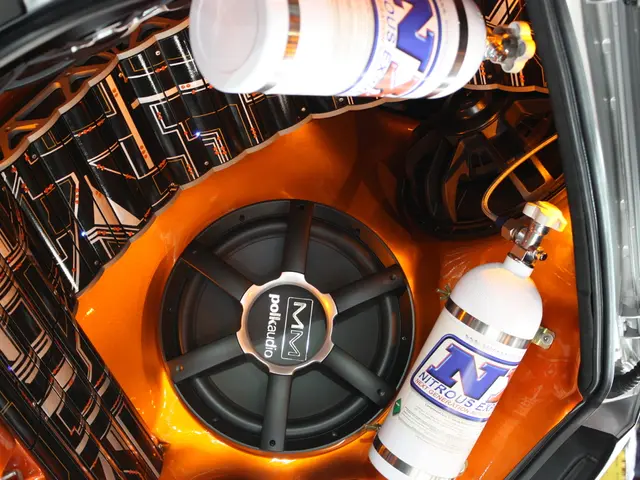Digital Sensors in Automotive Industry: Infusing a Touch of Modern Technology into the Traditional Car Assembly
In the world of automotive engineering, sensors have become an integral part of vehicles, from two-wheelers to heavy-duty trucks. Today's vehicles are equipped with a variety of sensors, with radar sensors, LiDAR sensors, and 3D sensors being the most commonly used [1][2].
Radar sensors, known for their reliability and cost-effectiveness, dominate the automotive applications, particularly in Advanced Driver Assistance Systems (ADAS) [1]. They excel in long-range object detection, adaptive cruise control, and collision avoidance, and perform well in varying weather and lighting conditions [1].
On the other hand, LiDAR sensors, a type of 3D sensor, are the fastest-growing segment due to their high-resolution 3D mapping capabilities, which are crucial for autonomous driving and advanced safety features [1][2]. These sensors use laser beams to create precise, three-dimensional maps of the surroundings, enabling accurate object identification and distance measurement [1]. Major automakers like Mercedes-Benz, Volvo, and Nissan have already integrated LiDAR into production vehicles [1][2][4].
3D sensors in automotive often combine LiDAR, radar, and cameras to provide comprehensive situational awareness. This 360-degree environmental monitoring is becoming increasingly common, not only in premium vehicles but also in mainstream models, thanks to cost reductions and rising consumer safety demands [1].
The impact of these sensors on the automotive industry is profound. They are fundamental to the development and deployment of ADAS and autonomous driving technologies, enabling safer, more reliable vehicle operation [1][2]. Regulatory mandates worldwide increasingly require ADAS features like autonomous emergency braking and lane-keeping assistance, driving sensor adoption [1][2].
Over-the-air (OTA) software updates improve sensor functionality and extend their usefulness without costly hardware changes [1]. Integration of these sensors is also accelerating innovation in vehicle-to-everything (V2X) communication, leveraging 5G to enhance system responsiveness [1].
Short-range radar sensors allow for blind-spot monitoring, lane-keeping assistance, and parking aids, while long-range radar sensors perform automatic distance control and brake assistance [1]. Camera sensors in autonomous vehicles function similarly to the human eye, allowing navigation based on detected objects [1].
Several sensors are used for tailgate release, tailgate close, trailer management, rear door, anti-theft alarm, immobilizer, and radio [1]. Calculating absolute pressure on the inlet manifold valve for early ignition is the first and most important application of sensors in an automobile [1]. Other important types of automotive sensors include brake sensors, pressure sensors, humidity and temperature sensors, clutch sensors, engine and E-motor sensors, exhaust sensors, and transmission sensors [1].
The integration of automotive sensors does not interfere or affect the basic functionalities of the vehicle [1]. The introduction of automotive sensors such as MEMS (Micro-Electro-Mechanical Systems) sensors, wireless sensors, and radar sensors will likely improve the reliability of autonomous vehicles [1]. Market segments such as passenger cars currently hold a major share of the automotive sensors market [1].
Miniaturization and the surge of IoT technology are key factors driving the demand for automotive sensors over the last decade [1]. Technological giants are developing self-driving vehicles with features such as rotating roofs for 360° visibility [1]. The prevalence of vehicle automation and increasing demand for concept cars will increase demand for automotive sensors [1].
Autonomous driving vehicles are generating extensive buzz across the global landscape [1]. Improved safety due to the integration of high-end automotive sensors for autonomous vehicles will likely boost the autonomous vehicle market [1]. The rising sales of passenger cars and growing market size in terms of value and volume are leading to increased demand for sensors to improve the performance of cars along with significantly enhancing the safety and reducing emission [1].
In summary, radar sensors remain widespread for current ADAS applications due to their reliability and maturity, while LiDAR sensors are rapidly expanding their presence because of their superior 3D environmental mapping, especially in autonomous vehicles [1][2][4]. Together, 3D sensors composed of LiDAR, radar, and cameras are transforming the automotive industry by enabling advanced safety, automation, and connectivity features [1][2][4].
References:
[1] "Automotive Sensors Market Size, Share & Trends Analysis Report By Type, By Application, By Region And Segment Forecasts, 2021 - 2028"
[2] "The Role of Sensors in Autonomous Vehicles"
[3] "The Future of Automotive Sensors: Trends and Opportunities"
[4] "LiDAR Sensors: The Key to Autonomous Driving"
- In the realm of data-and-cloud-computing and technology, the integration of controlled impedance sensors in the automotive industry holds significant potential for vehicle-to-everything (V2X) communication, enhancing system responsiveness and paving the way for advanced safety features in future autonomous vehicles.
- The growth of the automotive sensors market, primarily driven by miniaturization and the surge of IoT technology, has led major industry players to invest in finance for research and development of advanced sensors such as LiDAR, radar, and cameras, which are crucial for autonomous driving and improved safety features.
- Furthermore, the rise in the demand for transportation, particularly in the industry of passenger cars, has spurred the need for controlled impedance sensors in not only autonomous vehicles but also in the development of Advanced Driver Assistance Systems (ADAS), contributing to the creation of safer and more reliable vehicles in the market.




